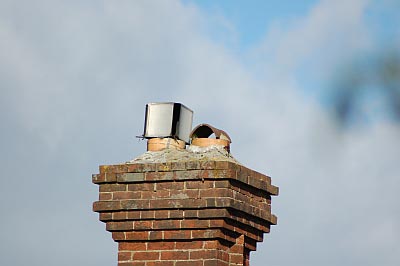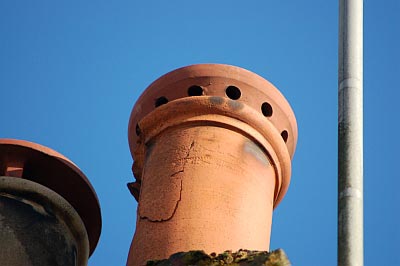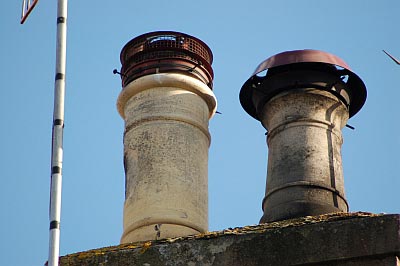Chimney Cowls
Smoke produced from stoves or open fires to heat rooms rises through the chimney and into the stack and outside via the chimney pot. Warm air created by the combustion within the fireplace or wood burning/multi fuel stove will rise up the chimney, under normal conditions, taking any smoke with it and dispersing it high up into the atmosphere where the smoke is less of a nuisance.
The difference in air pressure does affect chimneys. Atmospheric pressure tends to be lower the further upwards we go. That’s simply because there is not so much air above and therefore the weight is less as well. When it comes to chimneys, there will be a pressure difference between the top and base of the flue. That’s due to the fact that there isn’t so much air above. Therefore when these two areas – low pressure and high pressure – of the chimney are linked together via the flue, the result will be that air is likely to travel upwards from the low pressure base to the high pressure top of the flue. This, in a nutshell, explains the mechanics of the draw inside the chimney which enables the fire below to be lit and smoke/gas to be transported via the flue to the atmosphere (as long as the flue is swept regularly!)
If you ever see smoke coming out of a chimney pot that seems to be blowing down the roof towards the road, this means the atmospheric conditions are causing a down-draft. In very strong, cold and/or windy conditions, any breeze may overwhelm the updraft and push the airflow in reverse back down the chimney. As a result, smoke can then fill the room that houses the fireplace or stove. This poses a health risk (CO – carbon monoxide poisoning) and chances are that soft furnishings in the home then need to be professionally cleaned.
The amount of smoke given off is considerable when real coal is burnt (as it used to be for hundreds of years before the Clean Air Act legislation took effect). So fitting the correct cowl is essential or you will encounter smoke leakage into the nearby room.
Another important function of a cowl is to prevent birds and squirrels from nesting in the chimney. Cowls will also prevent rain, snow and even hailstones coming down your flue. Hailstones mixed with soot will have a detrimental effect to any cream-coloured carpets.
Cowls are also used on chimneys where the flues are redundant and therefore need to be capped off for protection against ingress of precipitation and Jackdaw birds nesting. A number of people also cap-off their chimneys to reduce heat loss since warm air from the central heating is being sucked up the chimney.
If you want to stop using your chimney, please remember that it still needs to breathe. It is wise to use a cowl that is designed to lend protection to the flue but also allow a degree of ventilation.
If you are local (Tunbridge Wells, Tonbridge, Sevenoaks, Brighton and Hove etc) and I am sweeping your chimney, I would be more than happy to give you some advice on which cowl would be best for your chimney set up.








